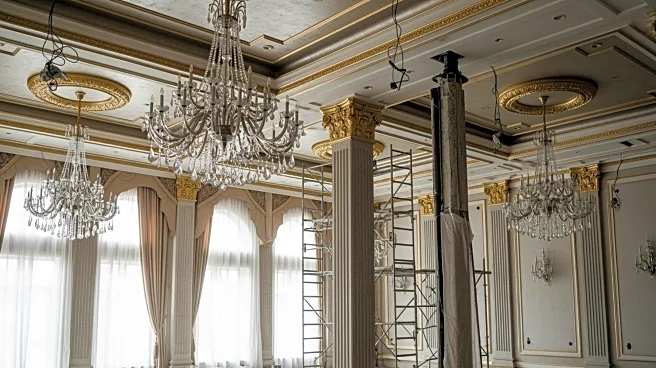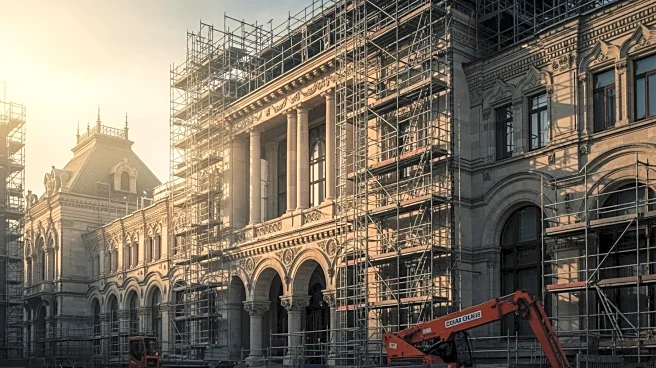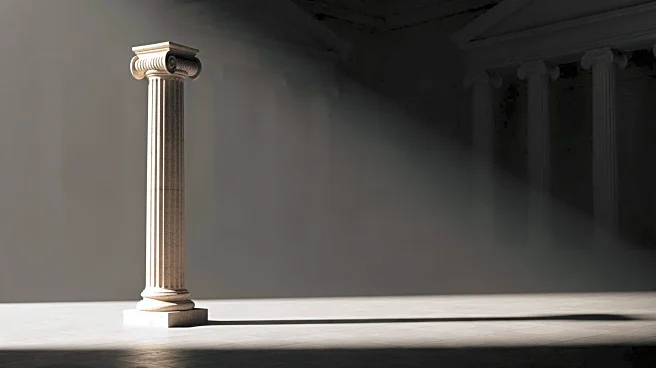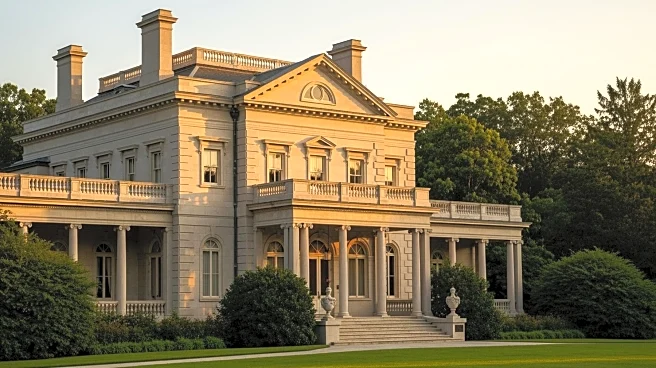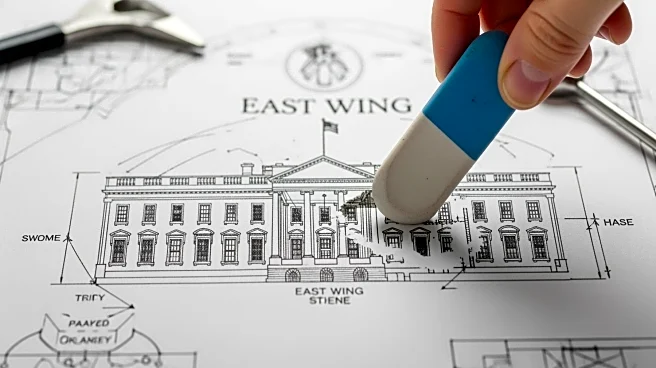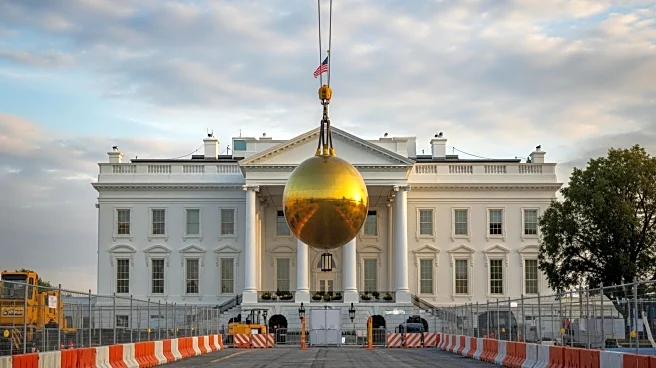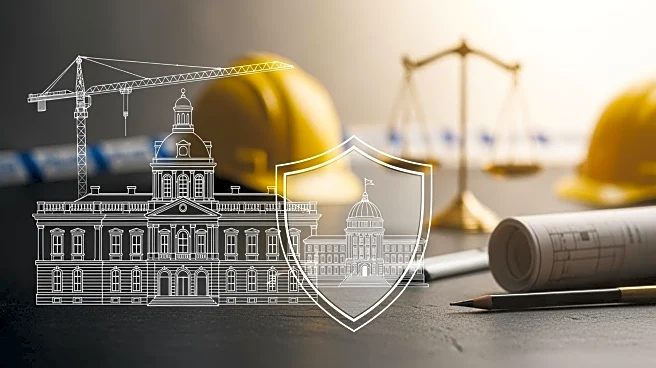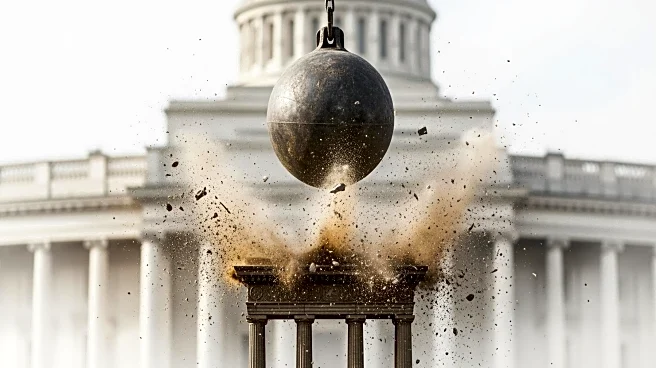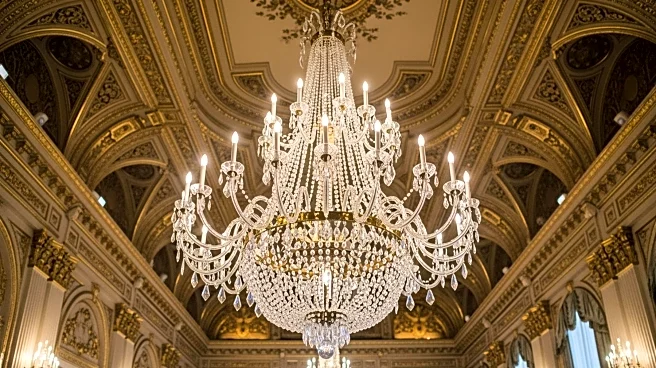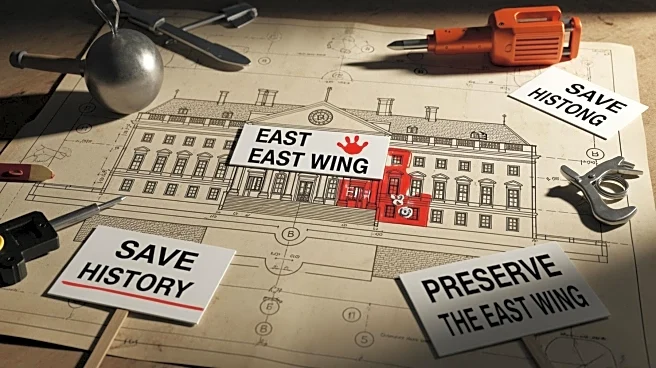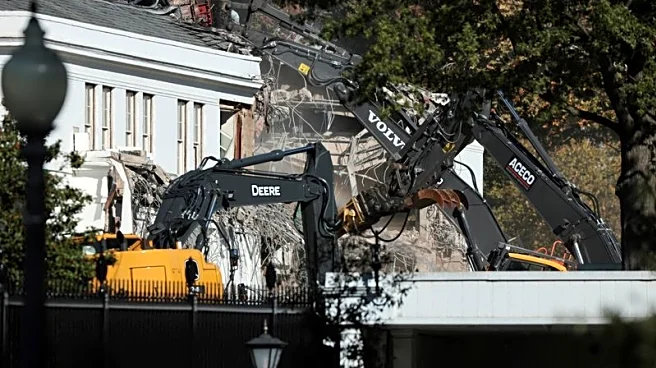What's Happening?
President Trump is set to begin construction on a new $200 million ballroom at the White House in September. The 90,000-square-foot ballroom will expand the White House's entertaining capacity and is designed
to resemble the opulent spaces of Trump's private clubs. The ballroom will feature gold and crystal chandeliers, gilded Corinthian columns, and a checkered marble floor. It will be located where the East Wing currently stands, requiring temporary relocation of staff. The project is funded by Trump and private donors, aiming to provide a permanent event space for future administrations.
Why It's Important?
The construction of the ballroom represents a significant addition to the White House, enhancing its capacity to host large events. This development could impact how future administrations conduct official functions, potentially reducing the need for temporary structures. The project underscores President Trump's influence on the architectural legacy of the White House, blending his personal style with historical preservation. It also highlights the role of private funding in public projects, raising questions about the intersection of private interests and public spaces.
What's Next?
Construction is scheduled to begin in September, with ongoing collaboration between the White House, National Park Service, and other agencies to ensure the project's success. The ballroom's completion will likely lead to changes in how events are hosted at the White House, possibly influencing diplomatic and political gatherings. Stakeholders, including future administrations and historical preservationists, will be monitoring the project's impact on the White House's architectural integrity.
Beyond the Headlines
The ballroom's design, inspired by Trump's private clubs, may spark discussions about the cultural and aesthetic influences on public buildings. The project could set a precedent for future renovations at the White House, balancing modern needs with historical preservation. Ethical considerations regarding the use of private funds for public spaces may also arise, prompting debates on transparency and accountability.
